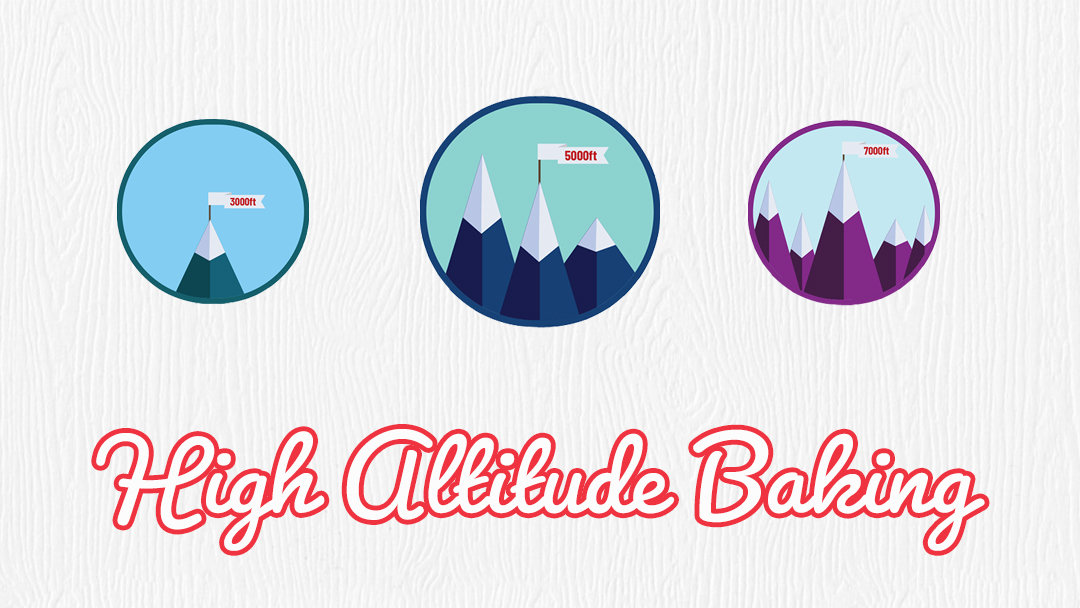
This post may contain affiliate links. Please see my full disclosure for details.
Hi Bold Bakers!
As Bigger Bolder Baking grows and spreads around the world, we cannot forget about those who live a little higher above-sea-level than the rest of us.
When I first moved to the U.S in 2008, I had a job as a morning baker in South Lake Tahoe. Tahoe is situated on the California/Nevada border and is a ski resort town high up in the Sierra Nevada mountains. In the winter it snowed hard so we would have to go into work on a snow day and physically bring the dough back to life after a cold night in the basement of a casino.
In the Summer, we had the opposite problem. It was so hot you had to almost slow down the dough. If those weren’t enough obstacles to face at 2 am, there was the fact that we were over 6000 ft/1987 meters above sea level. That means I am well versed in the changes you have to make for High Altitude Baking.
The Science Behind A Higher Sea Level & High Altitude Baking
The weight of air is a phenomenon most cooks seldom contemplate. But if you live in Denver, Calgary, Johannesburg, or a host of other high-altitude locales, you’ll face fallen cakes and overflowing batters if you don’t factor it in.
As elevation rises, air pressure falls, which means that bakers living at 3,000 feet (1,000 meters) will see different results than lowland bakers. Since most recipes are designed for sea level, high-altitude success requires a few clever adjustments.
Low air pressure has two main effects on baked goods: They will rise more easily, and lose moisture faster — liquids evaporate more quickly since water boils at lower temperatures at high altitudes.
As leavening occurs faster, gas bubbles tend to coalesce into large, irregular pockets in a batter or dough. The result? A coarse-textured cake. Alternatively, the pressure inside a rising batter can become so great that cell walls stretch beyond their maximum and burst. Collapsing cell walls means the cake falls too.
Quicker evaporation also has several ramifications. It makes baked goods more prone to sticking. And sugar becomes more concentrated. Some cakes won’t set. Or by the time they do set, they’ve become dry and crumbly.
For further information, there are cookbooks on this subject from experienced high altitude bakers: https://amzn.to/3ry4qzA. You may find these books in your local library.
Here is how you should tweak your approach to baking at a few different altitudes:

Now That You’re A Pro, Give These Recipes A Go!
For even more info, visit my references at allrecipes.com and exploratorium.edu.
This Recipe Made By Bold Bakers
1 Images

Juliegibson







I live in Edgewood, New Mexico and where my house sits we are 7,000+ ft, can you post some high altitude recipes? I’m new to baking and my 3 year old son asks me all the time if I could bake with him but everything I’ve baked hasn’t really come out right.
Thank you
I Live In Calgary (3000ft) And I Made Your No Yeast Pizza Which Had 3 Tsp Of Baking Powder. I Made It With 3 Tsp Of Baking Powder And I Was Supposed To Use 1/2 Tsp Less. Then The Pizza Rose A Lot (Totally My Fault). But This Chart Is Very Accurate And I Will Print This Out And Stick It To My Fridge.
Thank You So Much For This Chart!
Hey! Thanks for this. I live in Denver, so a lot of the time Bigger Bolder Baking recipes don’t come out as great. I have one question: Does the same rules apply to your microwave recipes?
I moved to Truckee (North Lake Tahoe) 2 years ago and still cannot get it quite right, even though i have been using these methods.
Like Evelyn…I moved from San Jose, California … but to Steamboat Springs, Colorado… also a ski town. We are right at 7,000 feet in elevation. Ive tried multiple combinations of baking adjustments with very little success. I’m anxious to put your advice (and measurements) into action!
Thank you for the high-altitude tips. I moved from San Jose, California three years ago to Edgewood, New Mexico at an elevation of 6700+ ft. So cooking and baking at a high altitude is new to me.
By the way, love Lake Tahoe! Many a summer growing up that was our family vacation. Zephyr Cove was our favorite Lake Tahoe spot.